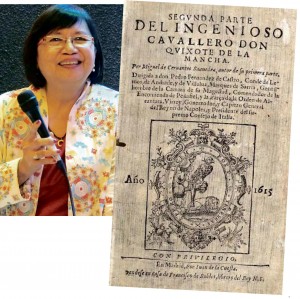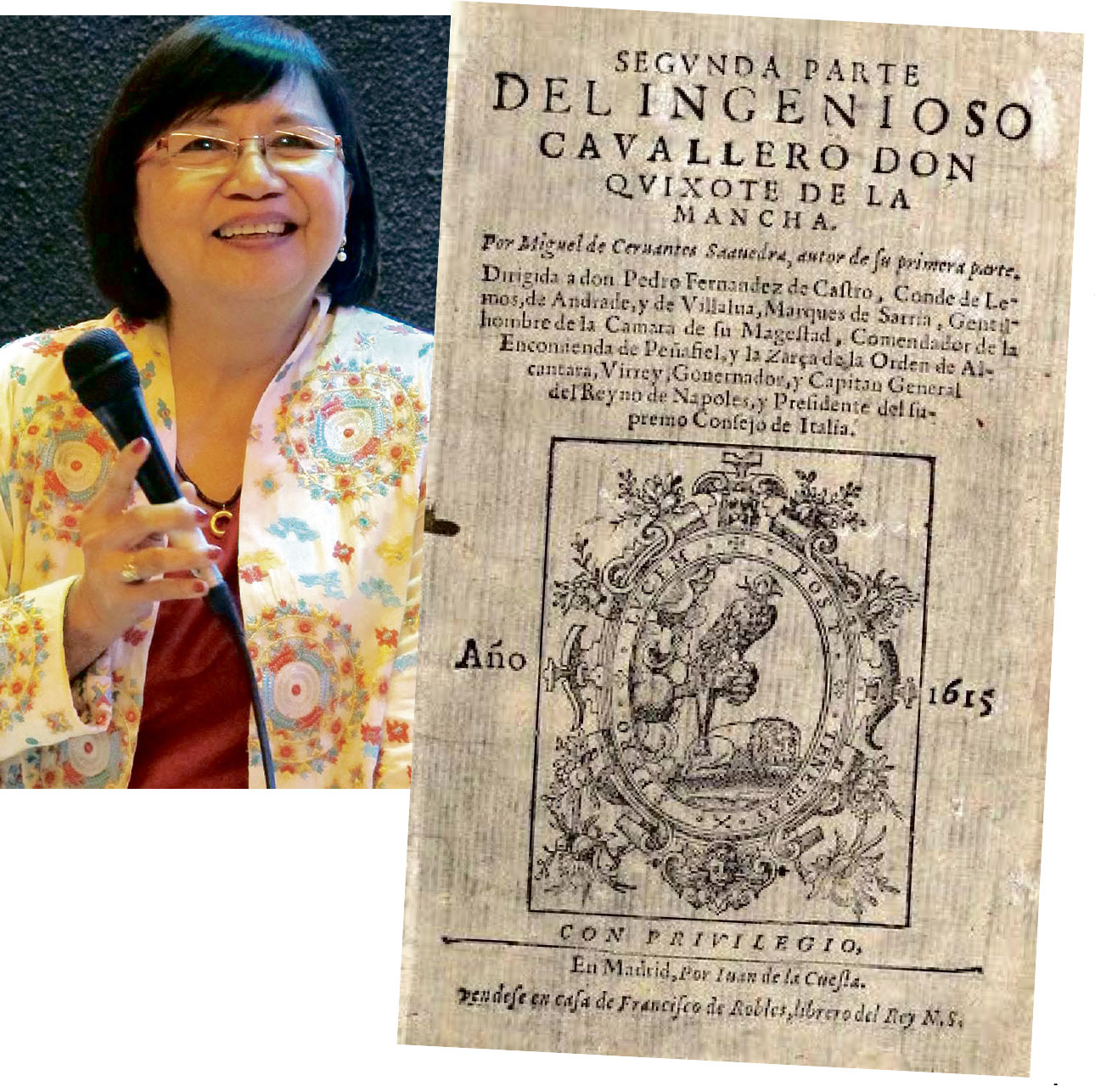
AWARD-WINNING writer and poet Marjorie Evasco said that one could read the entire Book II of “Don Quijote de la Mancha” by Miguel de Cervantes Saavedra as the “ludic malady of reading, fortified by the uses of enchantment and disenchantment.”
In celebration of the 400th year of publication of “Segunda Parte del Ingenioso Cavallero Don Quijote de la Mancha,” or Book II of the greatest novel in the world, Evasco delivered her lecture, “Altisidora Postscript: Rereading the Ludic in Book II of ‘Don Quijote de la Mancha,’” recently at the Instituto Cervantes Manila.
Cervantes employed metafiction to tell the story of Book II, wherein the knight errant Don Quijote and his squire Sancho Panza met characters who have read the first book and are aware of their misadventures.
“Book II is where Cervantes continues to explore with his readers the nature of literacy, of the effect of reading on readers, of the pleasures and pitfalls of a reading life, and of the different possible readings of life,” Evasco said. “Rereading the book, Book II especially, invites us to be exceptionally inventive-co-creators of the story within the story of the knight and his squire.”
Evasco said that Cervantes, in his literary quest, used ironic humor and the novelistic structural technique of building stories within stories.
“The historia, particularly Book II, dramatizes for and with the reader’s imagination the dynamic way different individual perspectives of reality—in a literary text—can interact, as individual characters seek a reality different from that commonly found in the arbitrary conventions and assumptive stereotypes of society by willfully reinventing the self and becoming another,” she said.
Highlight of Evasco’s lecture was a creative metatextual presentation where she told parts of the Book II through the voice of the character Altisidora, who has an unrequited love for the knight errant Don Quijote.
“It is possible [to do a creative metatext] because there are many gaps in the novel and you can enter it,” she said. “Many of the things said by Altisidora are exactly how Cervantes said them. I did not change anything.”
According to Evasco, Altisidora, like Don Quixote, knows how to act within her story, a segment of a life’s journey from enchantment to disenchantment.
Chivalry survives
“I believe Altisidora’s creative spirit lives on in generations of female artists, musicians, writers and readers who get her point and appreciate the subtle irony that while she was Book II’s most inventive internal character-as-author, she could only know what Miguel de Cervantes knew of his world, but that she could not know the hand of Miguel de Cervantes, the author-as-creator,” she said.
She noted that in re-reading the Book II, she found that some elements in the novel were still present today, especially in the Philippines.
“As I looked at Altisidora more closely with the idea of making a metatext, I saw that chivalric code and courtly love is still very much in place in the Philippines,” she said. “No wonder that the best-selling books are the romance fiction in the Philippines.
Cervantes always put the idea of authorship in question and problematized the idea of what is original or pure.
“I think it helps if you are aware as a reader that Cervantes is not taking himself seriously,” Evasco said. “In other words, if you read the prologue, he says ‘you know I’m writing this preface or prologue and I don’t know how to write it.’”
Evasco noted that Cervantes, in fact, had this idea of making up the blurbs at the beginning of his book because for him literature is self-affirming. Following the tradition of Cervantes, she quipped that one does not need someone more famous to write one’s blurbs.
First political novel
Evasco alluded to critic Rodrigo Gonzales Echevarria, who said that “Don Quijote” could be read as the first political novel because it talked about the power dynamics in the society of that time.
“Sancho Panza and Don Quixote, for example, belong to different classes but because they were friends they were able to discourse freely,” Evasco said. “It also tells you about the society in which they were living that strict class structure or hierarchies were already crumbling, and the aristocracy was waning also. So it’s a very interesting book.”
According to her, Gabriel Garcia Marquez said that all the novels one could think of would go all the way back to “Don Quijote.”
“No wonder many writers said that it is the seed of all novels in the world,” Evasco said. “All the narrative genres, all the strategies of telling a story [Cervantes] experimented. So he went ahead of everybody. And I don’t think he will be lost. He will live on and on. That’s a truth we could not escape.”









































